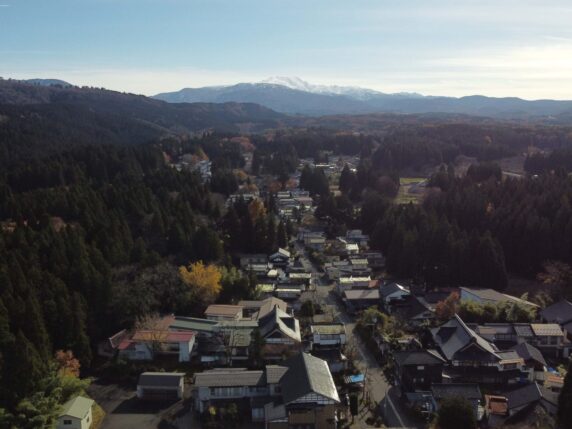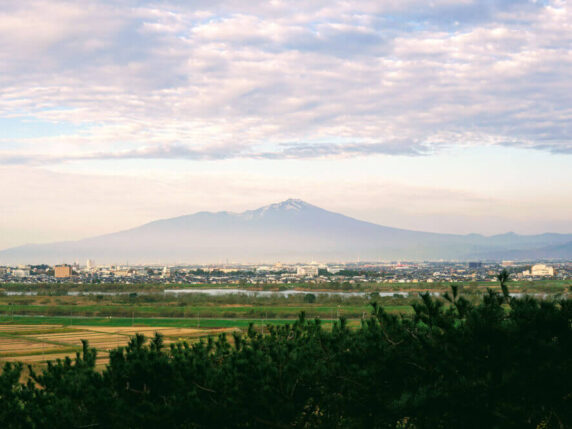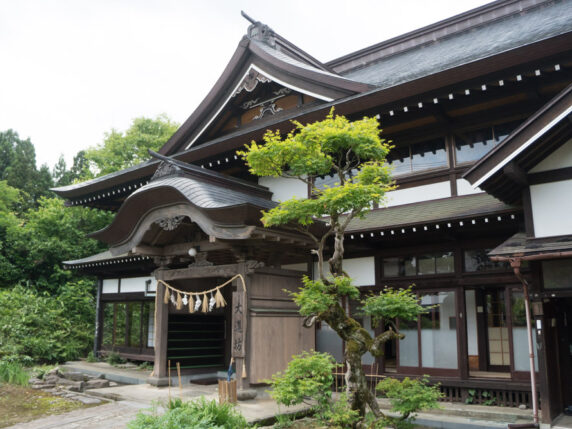The Ultimate Guide to Accessing the Dewa Sanzan
Written by Timothy Bunting
How to get to the Dewa Sanzan
When it comes to unique experiences outside mainstream Japan, Yamagata's Dewa Sanzan should be at the top of the list. You can read our other articles about why you should visit this place, but this article is a comprehensive guide on all the best ways to access the Dewa Sanzan; plane, train, bus, or car. Heard about Japan’s great outdoors? Keen to discover the culture and history of rural Japan? Or the spirituality? The Dewa Sanzan, the Three Mountains of Dewa, can't be beaten.
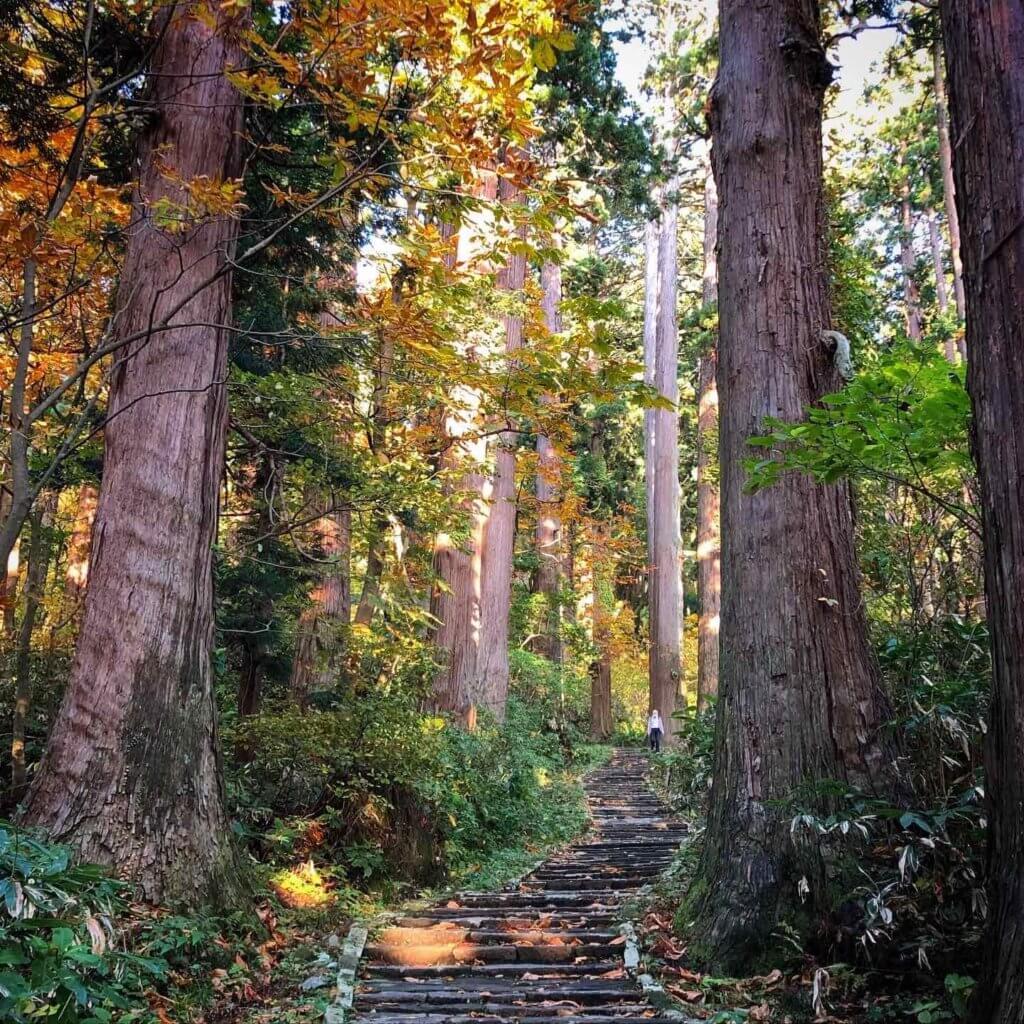
Article Contents
| Where are the Dewa Sanzan? |
| Access by train |
| Access by air |
| Access by bus |
| Access by car |
| Tsuruoka to Mt. Haguro |
| Tsuruoka or Mt. Haguro to Mt. Gassan |
| Tsuruoka or Mt. Haguro to Mt. Yudono |
Where are the Dewa Sanzan?
First things first, where are the Dewa Sanzan? The Dewa Sanzan alludes to three sacred mountains, Mt. Haguro, Mt. Gassan, and Mt. Yudono, of the former Dewa Province. Dewa Province encompassed modern-day Yamagata and Akita Prefectures located on the west coast of the Tohoku region in northern Honshu. These days, the Dewa Sanzan lie entirely in the remote Yamagata Prefecture. In fact, they split inland Yamagata with the Shonai region along the coast of the Sea of Japan. This means you’re going to have to decide where in the prefecture you want to visit before you come.
Where should I go on the Dewa Sanzan?
Technically, all three of the Dewa Sanzan lie in the Shonai region on the Sea of Japan coast. However, you can access Mt. Gassan and Mt. Yudono from both inland and coastal Yamagata. If you’re wanting the ultimate Dewa Sanzan experience, we highly recommend staying somewhere in Tsuruoka City in the Shonai region. We especially recommend a Shukubo Pilgrim Lodge on Mt. Haguro, or Saikan at the top of Mt. Haguro. Why? This puts you in by far the best location to reach all three peaks, plus the Shukubo are a short walk from the Five Story Pagoda. Not only that, staying in a Shukubo or Saikan all but guarantees an immersive cultural experience only available on the Dewa Sanzan.
How can I access the Dewa Sanzan?
The remote location of the Dewa Sanzan can be a blessing and a curse. It’s a blessing in that only those who truly want to visit do so. It’s a curse in that public transport can be infrequent and expensive. If you don’t have your own transport, or don’t speak Japanese, getting there can be a challenge. Fortunately for you, I’ve compiled this guide exactly on how to access the Dewa Sanzan.
Now that’s out of the way, there are many options available for getting to the Dewa Sanzan. Bullet train, plane, bus or car, put simply you are spoilt for choice on accessing the Dewa Sanzan. Obviously, the best method will depend on a number of factors; where exactly you wish to visit, where you are coming from, whether you have a JR pass, are an international resident with a flight back home, and of course how much money and time you have to spare. Take your pick: foot spa trains, picturesque views of the Sea of Japan, snowy landscapes, or all of the above!
Access the Dewa Sanzan By Train
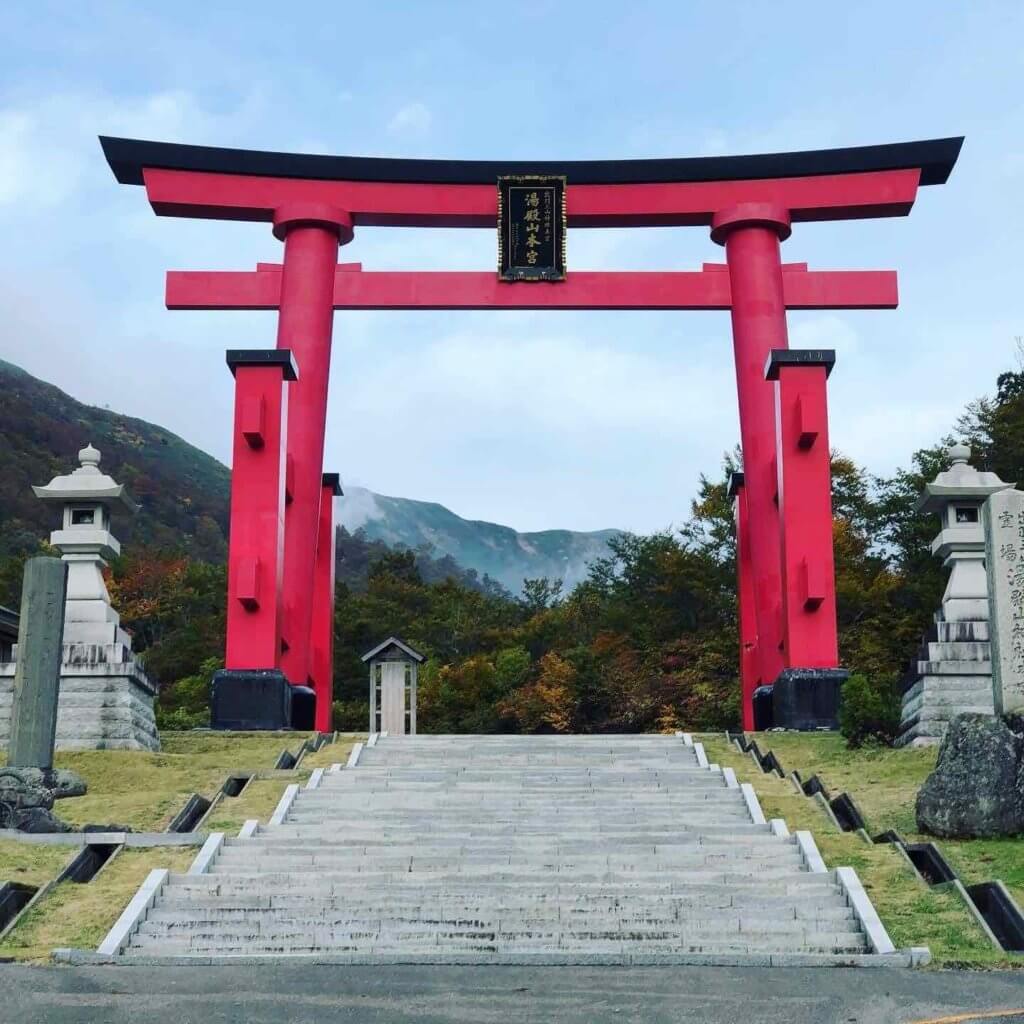
Travel by train to the Dewa Sanzan is perfect for:
- Those with a JR Pass
- Those with time to spare
- Those who like to take in the view
- Those who want to try a foot spa Shinkansen
- Those with reasonable budget
If you have the time, we’d highly recommend taking the train. The mountains and coast of the Sea of Japan in Yamagata Prefecture is one of the most beautiful places to travel in the country. In addition, if you're taking the inland Yamagata route, the stretch from Fukushima to Shinjo includes a bullet train with a foot spa. Yamagata Prefecture is served by JR meaning the JR Pass and JR East Pass can both be used here. Trains without the JR Pass can be a bit expensive, costing around ¥14,000 one-way between Tokyo and Tsuruoka, or from Tokyo via Shinjo and Amarume.
Trains to the Shonai Region
Surprisingly, the easiest way to Shonai is not by Yamagata Shinkansen (Bullet Train). The number of trains available and timing between local and bullet trains means travelling via Niigata on the Joetsu Shinkansen and the Inaho Limited Express is often more convenient. In addition, the route takes you through the stunning Japan Alps, and along the coast of the Sea of Japan. This coastal route was voted one of the best drives in the country, and is definitely worth the added time it takes. If you time it right, the trip from Tokyo to Tsuruoka takes around four hours all up. Then, you can to take the bus from Tsuruoka Station to each of the Dewa Sanzan: Mt. Haguro, Mt. Gassan, or Mt. Yudono.
The Niigata route is very popular amongst Japanese people due to the time and cost. Weekends and public holidays such as Golden Week around the first week of May and Obon in mid-August are very popular. It would be a good idea to avoid these times if possible, or to grab a reserve ticket as far in advance as possible. Travelling north from Niigata? Sit on the left-hand-side. Travelling south from Shonai? Sit on the right. This ensures you get the most of the views out onto the Sea of Japan. Once you are in Tsuruoka Station, there are busses to Mt. Haguro, Mt. Gassan, or Mt. Yudono.
Inland Yamagata by Train
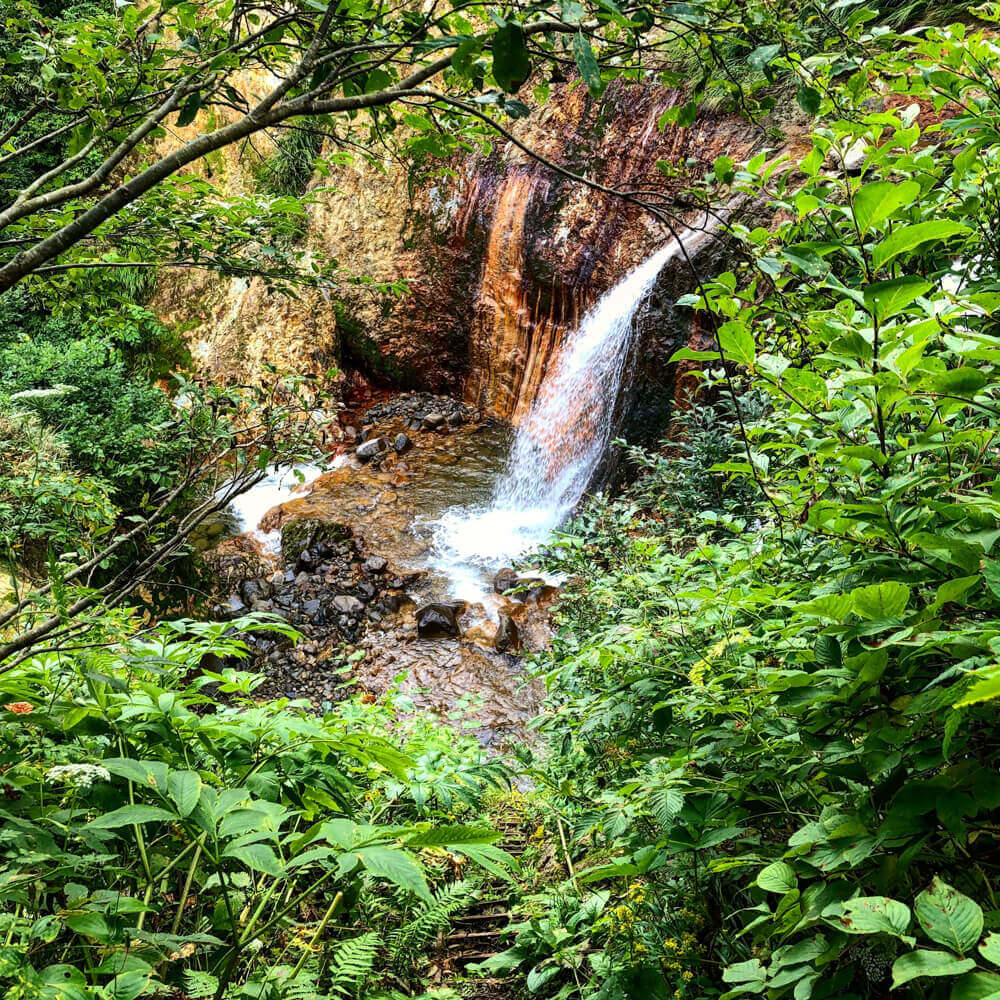
Thinking about hitting up Mt. Zao, Yamadera, Ginzan Onsen, or the other attractions of Yamagata Prefecture on the way? Take the Yamagata Shinkansen called the Tsubasa. The Tsubasa is combined with the Yamabiko Shinkansen until Fukushima Station. Just make sure you sit in carriages numbered 11 or above, carriages 1-10 travel on a different line. The Shinkansen from Tokyo to Shinjo in the north takes about 3 and a half hours, with 16 services daily. A timetable can be found here. Be aware that not all trains stop at all stations once in Yamagata, so you may need to transfer.
To get to Tsuruoka from northern Yamagata Prefecture (Oishida or Shinjo), take the Shinkansen to Shinjo and switch to a local train to Amarume. Then, switch to the Uetsu Main Line that takes you to Tsuruoka. Once you are in Tsuruoka Station, there are busses to Mt. Haguro, Mt. Gassan, or Mt. Yudono. If you're travelling from Yamagata City, Yamadera, Mt. Zao, Sagae, or Nishikawa, it's best to take the highway bus to Tsuruoka.
Access The Dewa Sanzan By Air
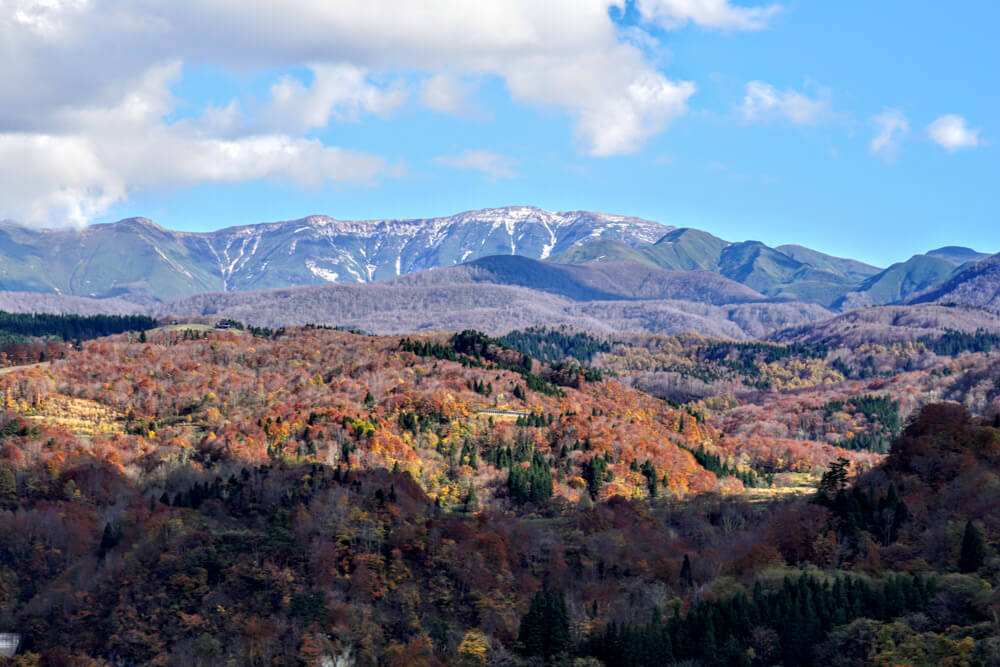
Air travel to the Dewa Sanzan is perfect for:
- Those with an international flight home
- Those short on time
- Those who just want to get to the mountains
- Those on a budget
Fortunately, Yamagata Prefecture has good flight access from a few locations around Japan. Yamagata is rare in Japan in that it is served by two airports, Shonai (SYO) and Yamagata (GAJ). For ease of access, it's much better to fly to Shonai Airport if you're choosing that route.
Flights to and from The Shonai Region
Shonai Airport has flights from Tokyo Haneda on ANA. There are four flights each day to Haneda from Shonai with varying times, but always around these hours: 7:10, 8:35, 12:50, 17:50. The return flights leave Haneda at 6:55, 11:10, 15:55, 20:15. Flights to and from Haneda take one hour.
Haneda airport is easily accessible from the centre of Tokyo, taking less than one hour by train or bus. Tokyo Narita, on the other hand, is a bit more difficult to reach from the centre of Tokyo, taking 90 minutes to two hours. If you have a foreign passport, probably the best option is to take the Narita Express to take advantage of cheaper return travel. If you're pressed for time, or for ease of access, take ANA.
Shonai Airport to the Dewa Sanzan
Shonai airport is located on the border of Sakata and Tsuruoka Cities, and the city centre of each city can be reached by car or taxi within 30 minutes. There is a shuttle bus to Tsuruoka Station that costs ¥760 and leaves 10 minutes after every arriving flight. Once in Tsuruoka Station, there are busses to Mt. Haguro, Mt. Gassan, or Mt. Yudono.
Flights to and from Inland Yamagata
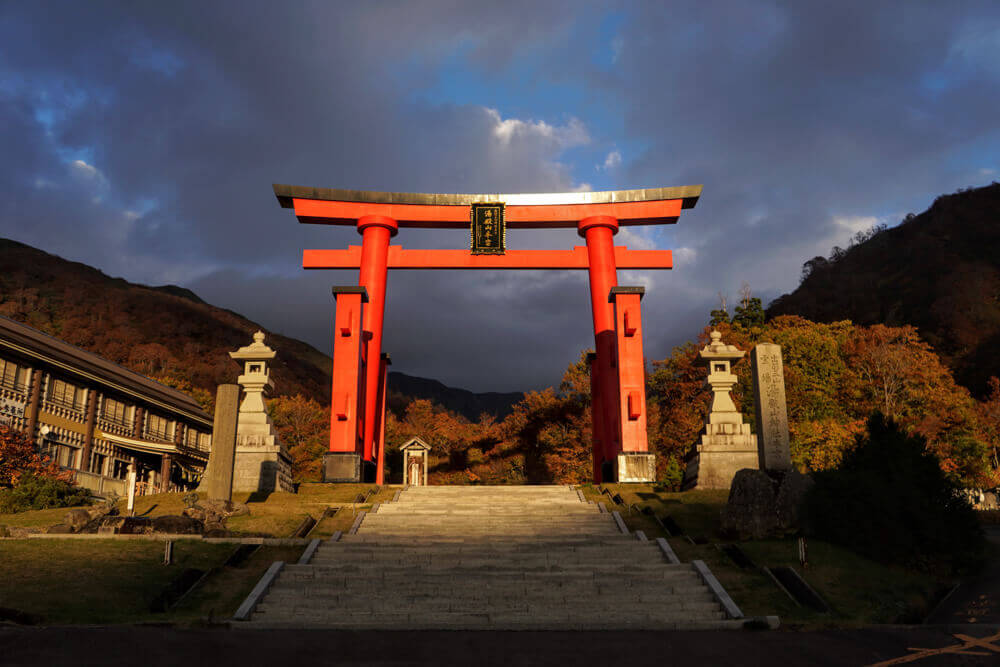
Yamagata Airport (GAJ) has flights to and from Tokyo Haneda, Osaka, Nagoya, and Sapporo on JAL. Fuji Dream Airlines serves the Nagoya route, and you can see Mt. Fuji on this route if the weather is right.
Be careful that Yamagata Airport is a little hard to access, especially in winter. However, there is an Airport Shuttle to Yamagata City that takes about 35 minutes and costs ¥980 for adults and ¥490 for children (under 6s ride free with one adult fare). A timetable and more information can be found here. Busses from Yamagata Airport to central Yamagata depart 15 minutes after every arriving flight. No reservation is required, and you can pay the fare when you get on the bus. In the reverse case, the shuttle busses to Yamagata Airport are designed to arrive 40 minutes before a flight departure.
There are a few options available to get to the Shonai region from Yamagata Airport. Of course, by far the easiest option is a rental car. However, other than that, you’ll have to take the bus to Yamagata Station, then take another bus from there to Tsuruoka before going onwards to Mt. Haguro, Mt. Gassan, or Mt. Yudono. Since you're already in the area, why not check out Yamadera?
Flights to and from Sendai
For those travelling from places other than Tokyo such as Osaka, Nagoya, or Hokkaido, it might be a good idea to take advantage of the bus to Tsuruoka from Sendai Airport. From Sendai Airport or Sendai Station, there is a bus that costs ¥3,300 one-way or ¥6,100 return (halve the prices for children) and stops at S-Mall directly next to Tsuruoka Station. Once you in Tsuruoka Station take the bus to Mt. Haguro, Mt. Gassan, or Mt. Yudono.
Accessing the Dewa Sanzan By Bus
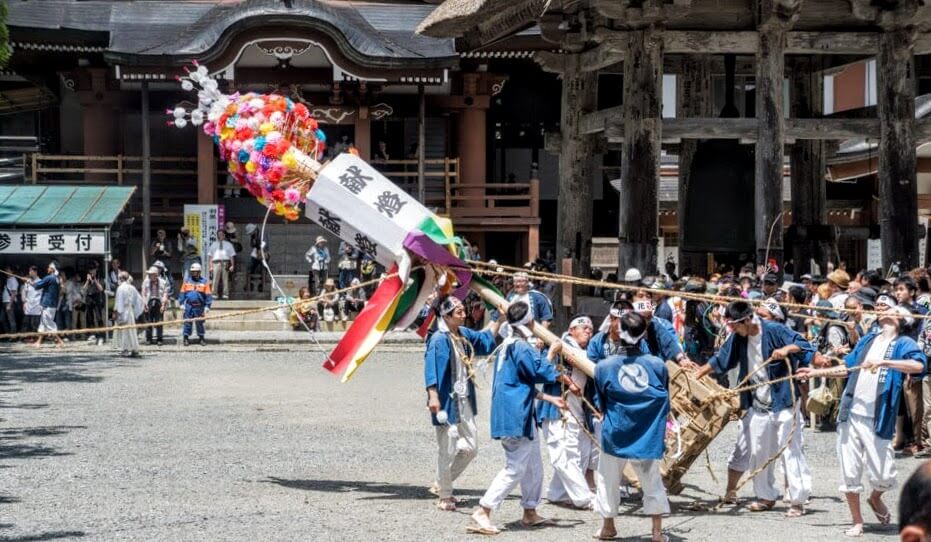
Travel by bus to the Dewa Sanzan is perfect for:
- Those on a budget
- Those travelling from Kansai (USJ)
- Those who want to combine travel and lodging
Night busses from Tokyo and other locations
Busses to and from Tsuruoka and Tokyo are very popular amongst the price-conscious, so expect to see many students. The busses are operated by Shonai Kotsu and Kokusai Kogyo. Shonai Kotsu has busses from Ikebukuro, Shibuya, and Shinjuku in Tokyo, Tokyo Disneyland in Chiba, and USJ via Kyoto and Osaka. The busses on offer all depart at night time and take around 7 or 8 hours arriving in your destination the next morning. These busess cost around ¥8,000 one-way from Tokyo, or ¥14,000 one-way from Kansai (Osaka, Kyoto, USJ). Once you are in Tsuruoka Station, there are busses to Mt. Haguro, Mt. Gassan, or Mt. Yudono.
Busses from Sakata, Inland Yamagata and Sendai
You can also take the bus from Sakata Station or Sakata Aeon Mall to Tsuruoka station for ¥820 Yen, but the train is more convenient and cheaper. Shonai Kotsu runs busses to and from inland Yamagata (Yamagata City) and Tsuruoka, all the way up to Sakata and Honjo in Akita Prefecture. Busses from Yamagata Station to Tsuruoka cost ¥2,470. There are also busses from Sendai Station and Sendai Airport. Both of these busses stop at Sagae and Nishikawa and cost around ¥3,200. From Tsuruoka Station, there are busses to Mt. Haguro, Mt. Gassan, or Mt. Yudono.
Access The Dewa Sanzan By Car
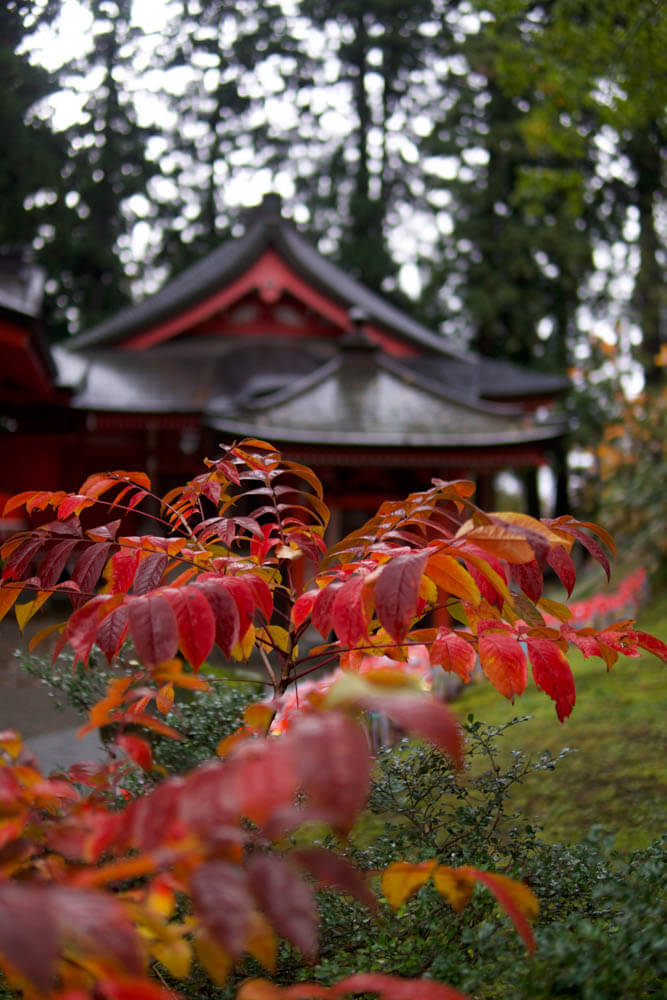
Tohoku Expressway
If you have a car, getting to Yamagata is basically a matter of travelling north on the Tohoku Expressway. After Murata take the exit onto the Yamagata Expressway, and head towards Sakata. Then take the Shonai Asahi exit and head to Mt. Haguro (Google Maps link).
Once there: Getting around the Dewa Sanzan

If possible, we highly recommend getting a rental car within Yamagata Prefecture as public transport can be infrequent and slow. When using public transport, besides the direct busses from Mt. Gassan or Mt. Yudono, the only way to access Mt. Haguro is by bus from Tsuruoka Station. This means that if you're coming from Sakata City, Shinjo City, or Shonai Airport, you'll have to make your way to Tsuruoka station first. It takes about 40 minutes from Shonai Airport to the Shukubo Village of Mt. Haguro by car.
Tsuruoka Station to Mt. Haguro
Need to get to Mt. Haguro? Busses from Tsuruoka Station to the bottom of Mt. Haguro cost ¥820 and take about 40 minutes. There are eight services that run all year from Tsuruoka station to Mt. Haguro. If you’re staying in a Shukubo, most likely you will want to stop somewhere before Haguro Zuishinmon. Daishinbo and Daishobo are closest to Sakura Koji.
Most of these busses go all the way to the top of Mt. Haguro, Haguro Sancho, where Sanjingosaiden (Dewa Sanzan Shrine) and Saikan are. This is also where the Dewa Sanzan Flower Festival and Hassaku Festival take place. Busses to Haguro Sancho cost ¥1,210 and take about 50 minutes. These busses leave Tsuruoka Station at 7:52, 9:42* 10:42, 11:42*, 12:57, 14:32, 15:52, and the last bus is at 17:27. The 17:27 bus only goes to the Shukubo village and Zuishinmon at the base of Mt. Haguro. If you wish to take a bus to the top, you will need to catch the 15:52, or take a taxi.
*The 9:42 and 11:42 busses do not run from November to the end of March.
Additional Busses
However, there are extra bus services between April and the beginning of November, and in the mornings when the bus service to Mt. Gassan 8th Station is on. The extra busses between April and November leave Tsuruoka Station at 9:42 and 11:42. Busses to Mt. Gassan 8th Station run through all of July and August, and on selected dates in September (see here for more details). These busses leave Tsuruoka Station at 6:02 and 7:02.
In addition, there are busses that only run on weekdays excluding the 31st of December. These busses leave Tsuruoka station at 13:32 and 18:37. Be warned that the 18:37 only takes you to Zuishinmon at the bottom of Mt. Haguro. More information for busses between Tsuruoka Station and Mt. Haguro and Mt. Gassan can be found here.
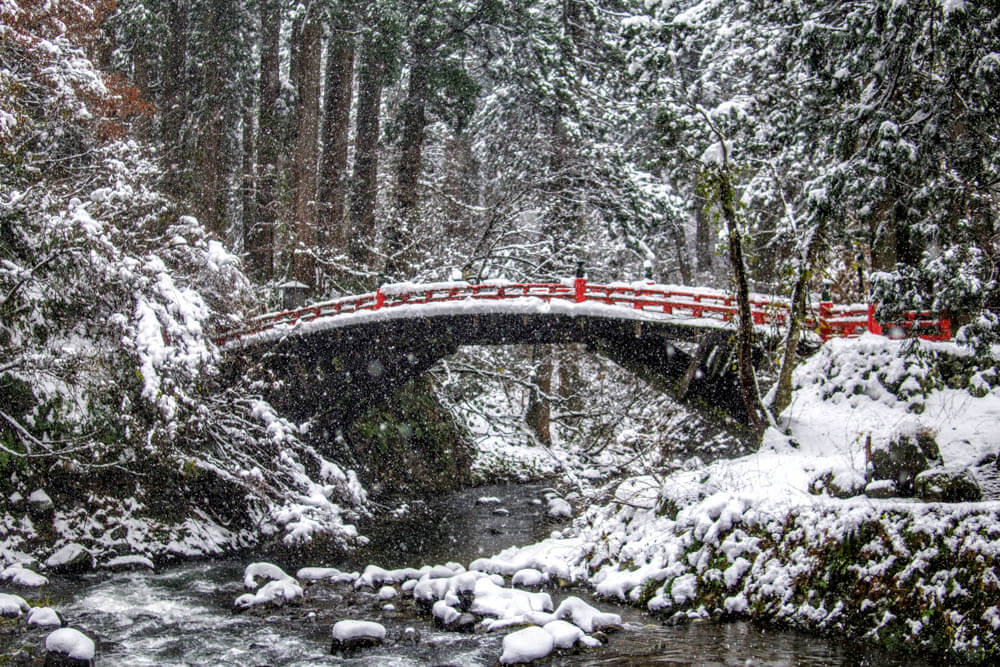
Mt. Haguro or Tsuruoka Station to Mt. Gassan
In 2019, the bus to and from the 8th Station of Mt. Gassan and Mt. Haguro runs every day in July and August, and on selected dates in September (1st, 7th, 8th, 14th, 15th, 16th, 21st, 22nd, 23rd, 28th, 29th, basically weekends and public holidays on the 16th and 23rd). This bus costs ¥1,560 from the top of Mt. Haguro (Haguro Sancho on the timetable), but can also be caught from the Shukubo Village or the Zuishinmon gates at the base. It is an extra ¥1,180 to get back to Tsuruoka Station on this bus. Alternatively, the bus that runs straight from the 8th station of Mt. Gassan to Tsuruoka Station costs ¥2,060.
Mt. Haguro or Tsuruoka Station to Mt. Yudono
In 2019, the busses to and from Mt. Haguro or Tsuruoka City and Mt. Yudono operate primarily on weekends from June to the first weekend of November, as well as for Obon (August 8 to 16) and other public holidays (July 15, September 16, 23, October 14, 22, and November 1). It is ¥3,000 for a one-day round-trip ticket. Note that Haguro Zuishinmon is at the base of Mt. Haguro, with Haguro Sancho being the top. Mt. Yudono’s bus stop is known as Sen’ninzawa Yudono.
The bus back to Mt. Haguro leaves from this car park at 14:10 or 16:50 on the dates mentioned. The 14:10 takes you to Mt. Haguro, but the 16:50 bus goes straight back to Tsuruoka station. If you’re staying on Mt. Haguro, we recommend getting back to Mt. Yudono in time for the earlier bus. Otherwise you’ll have to take another bus from Tsuruoka station.
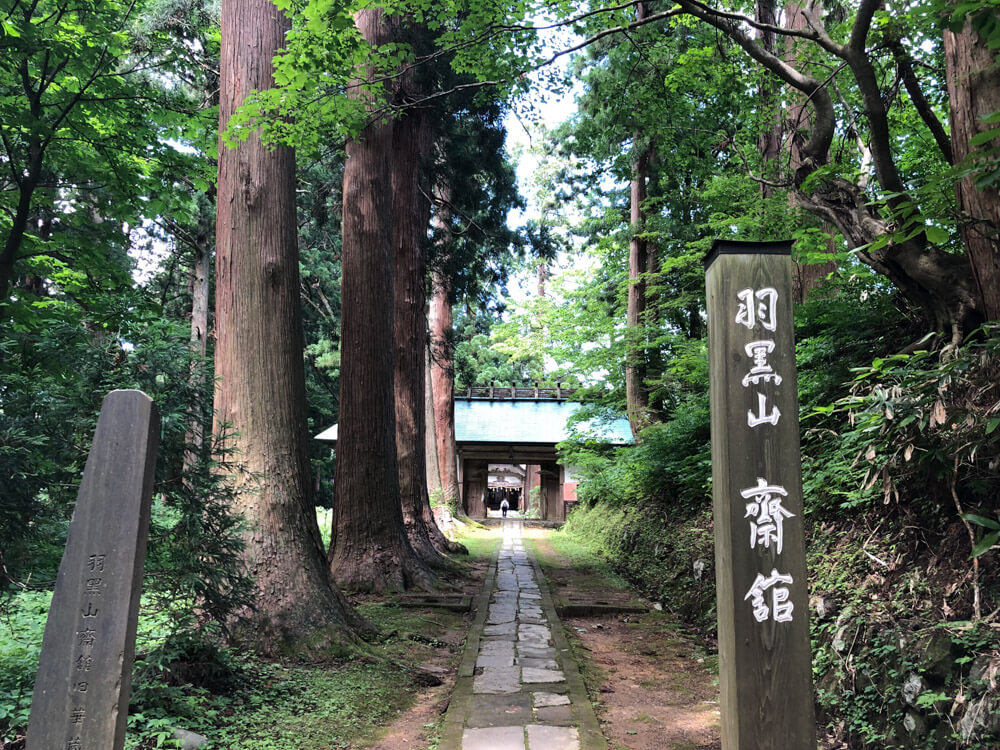
Experiences on the Dewa Sanzan
If you're looking for unique experiences to do on the Dewa Sanzan, check out Megurun. Megurun is a locally-based company that provides ample opportunities for self-development including their flagship Yamabushido programs. Simply put, there is no better experience on the Dewa Sanzan than authentic training with the Yamabushi. However, there are other options such as learning Zen at Zenpoji Temple, or trekking with the Yamabushi on Mt. Haguro, even in winter.
Other spots in Yamagata Prefecture
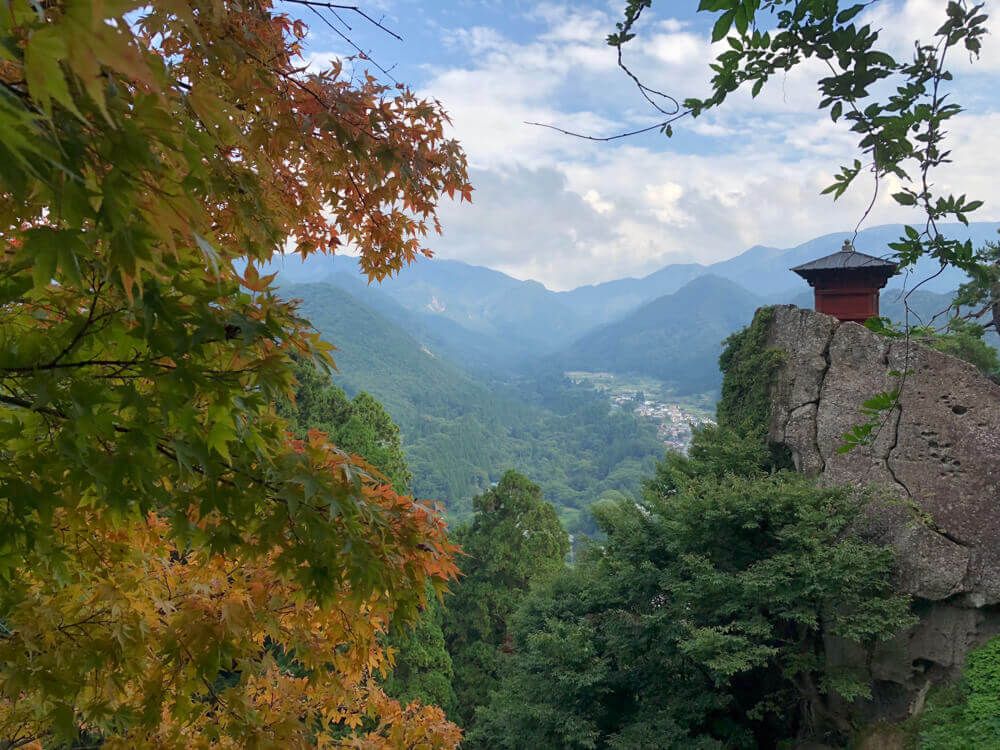
In addition, there are numerous other locations surrounding the Dewa Sanzan that are well worth the visit. Mt. Gassan is home to Hijiori and Shizu Onsen (hot spring) villages, and there are many other Onsen villages around. In fact, Yamagata Prefecture is famous for having an Onsen in every municipality. Tsuruoka itself has four famous Onsen towns; Yutagawa, Yunohama, Yura, and Atsumi, all located in convenient locations to reach the Dewa Sanzan. Not to mention the super-famous Ginzan Onsen, just like the Onsen from Hayao Miyazaki’s Spirited Away.
Other popular locations for visiting Mt. Gassan include Nishikawa and Sagae. While you’re in the region, why not check out other famous locations in inland Yamagata? Mt. Zao is available for skiing in winter and hiking in the summer, Yamadera is always available for a spiritual hike, which will put you in touch with your inner Matsuo Basho.
Conclusion
There are many options for accessing the Dewa Sanzan, each with their own advantages and disadvantages. Many people use a combination of two, most often flying to Shonai then taking the train to their next destination. I hope this article has provided you with the information you need to be able to access the Dewa Sanzan in a way that is appropriate for you and your group. If you're stuck, don't hesitate to reach out, we're here to help!
Timothy Bunting
Tim Bunting is a Dewa Sanzan Shrine Yamabushi with over 10 years' experience living beneath the three mystical peaks. He is a self-professed Dewa Sanzan nerd, and is currently working on the Yamabushido project and Dewa Sanzan Monzenmachi Project with Megurun Inc. His roles including assisting in Yamabushi trainings, translating, interpreting, and curating Dewasanzan.com.
Insider information and updates on
The Dewa Sanzan.
Subscribe to the Dewa Sanzan Tribe now.

